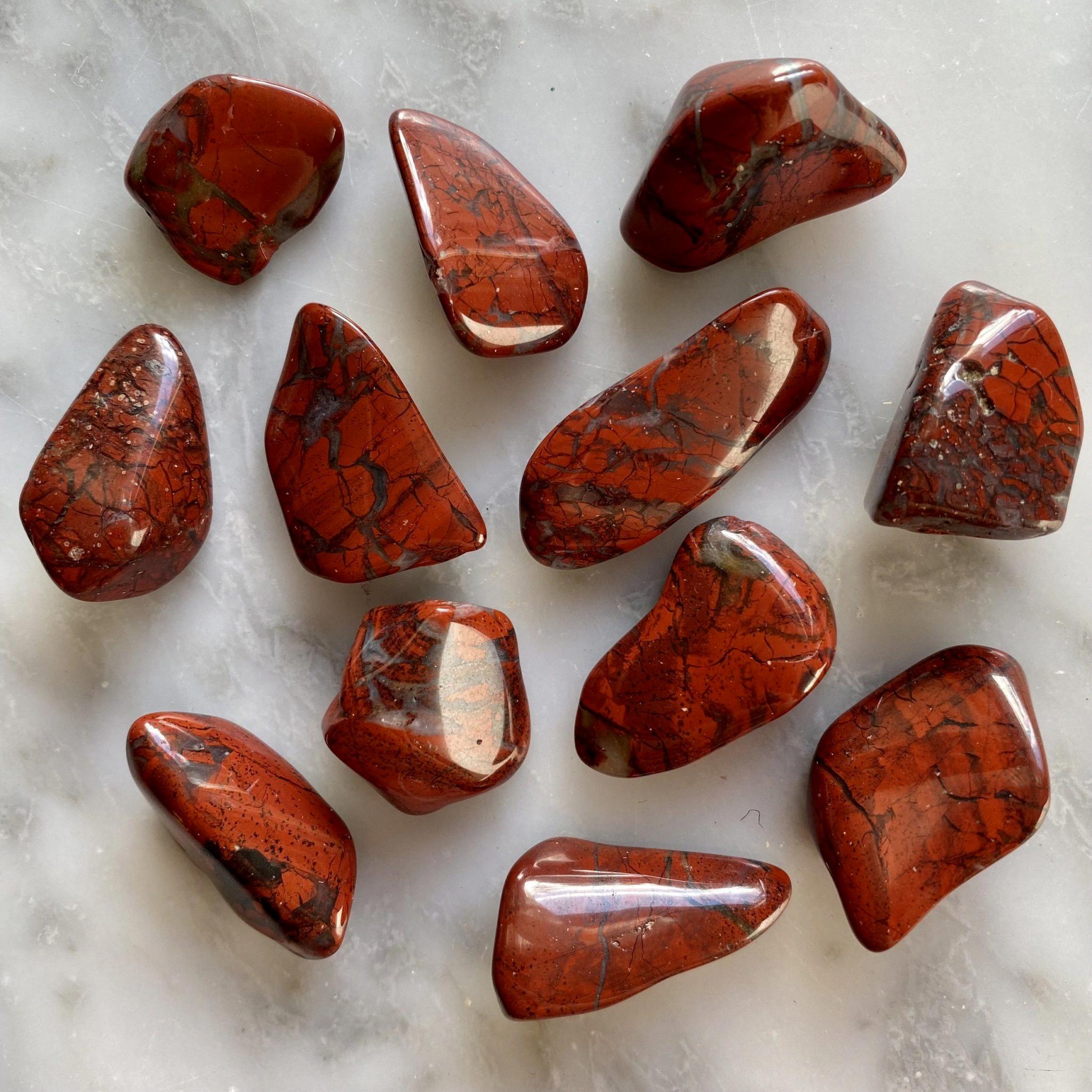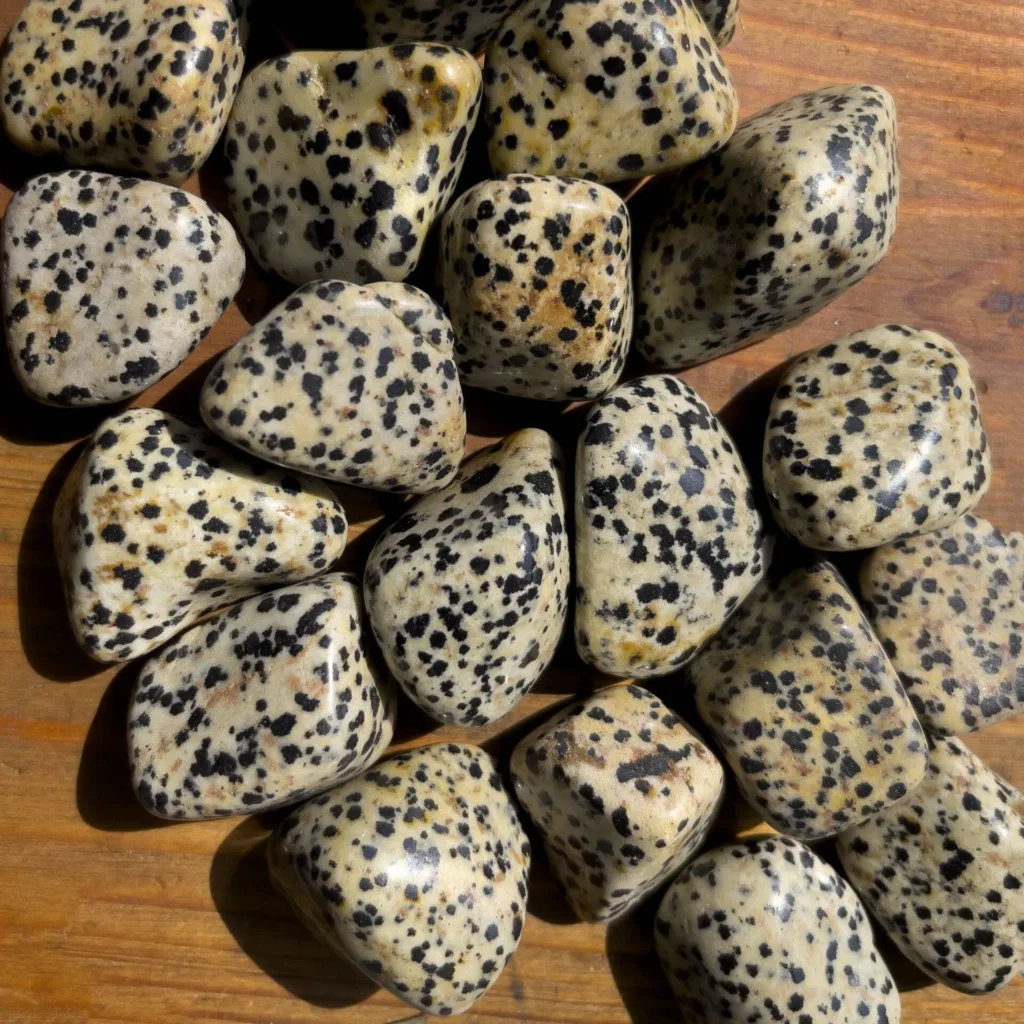Dalmatian Jasper is a unique stone that is highly sought after by collectors and jewelry makers. This stone is named after the famous Dalmatian dog breed, thanks to its distinctive black and white spotted pattern. However, the rock mass that makes up dalmatian jasper is actually white or grayish in color, with small crystals of quartz visible to the naked eye.
One of the most important things to know abot Dalmatian Jasper is that it is not a true jasper. Instead, it is a type of igneous rock known as an aplite, which is formed from magma that has solidified at a shallow depth beneath the Earth’s surface. The black and greenish spots that give Dalmatian Jasper its unique appearance are actually spherical assemblages of minerals, not individual crystals.
If you’re interested in buying Dalmatian Jasper, it’s important to know how to tell if it’s real or not. One of the easiest ways to identify real Dalmatian Jasper is to look for its physical properties. Real jasper is made of cryptocrystalline quartz, which gives it a hardness of 7 on the Mohs scale. This means that it cannot be scratched by a piece of glass or a knife.
Another characteristic of real Dalmatian Jasper is that it is opaque. If you can see through the stone, it is not true jasper and may be a fake or a different type of stone altogether. When examining the exterior of the stone, you may notice colored chunks or a waxy feeling, both of which are common features of jasper.
It’s also important to be aware that there are many types of fake Dalmatian Jasper on the market. Some sellers may try to pass off dyed or painted stones as the real thing, so be sure to ask questions and do your research before making a purchase.
Dalmatian Jasper is a popular stone known for its black and white spotted pattern. Although it is not a true jasper, it is still highly valued for its unique appearance and physical properties. To tell if Dalmatian Jasper is real, look for its hardness, opacity, and other physical features that are characteristic of jasper.
Identifying a Dalmatian Jasper
Dalmatian jasper, also known as dalmatian stone, is a unique type of jasper that is easily recognizable by its distinct black and greenish spherical patterns on a white to grayish background. Here are some ways to identify dalmatian jasper:
1. Look for the characteristic pattern: The most obvious feature of dalmatian jasper is its black and greenish spherical patterns, which resemble the spots on a Dalmatian dog. These patterns are caused by the mineral aggregates in the rock, which are typically made up of black tourmaline or other minerals.
2. Check for small quartz crystals: Dalmatian jasper is typically made up of a white to grayish rock mass that lacks larger phenocrysts. However, small crystals of quartz are often visible to the naked eye and can help confirm that you are looking at dalmatian jasper.
3. Pay attention to the texture: Dalmatian jasper has a rlatively smooth texture and is often used for decorative purposes such as jewelry or carvings. The rock mass itself is typically fine-grained and compact, with a hardness of 6.5 to 7 on the Mohs scale.
4. Check the location: Dalmatian jasper is found in various locations around the world, including Mexico, India, and the United States. However, it is most commonly associated with the Chihuahua region of Mexico, where it is mined for use in jewelry and other decorative items.
Dalmatian jasper can be identified by its characteristic black and greenish spherical patterns, small quartz crystals, smooth texture, and association with specific mining locations.

Source: mineraemporium.com
Identifying Real Jasper Crystals
Jasper is a mineral that has been used in jewelry and decorative objects for centuries. It is a type of cryptocrystalline quartz, which means that it has a microcrystalline structure that is not visible to the naked eye. If you are wondering how you can tell if a jasper crystal is real, there are a few things you can look for.
1. Hardness: Real jasper has a hardness of 7 on the Mohs scale, which means that it canot be scratched by a piece of glass or a knife. If you can scratch the surface of the crystal with a sharp object, it is likely a fake.
2. Opaque: Real jasper is opaque, which means that it does not let light pass through it. If you can see through the crystal or it appears translucent, it is likely not real jasper.
3. Color: Jasper comes in a variety of colors, including red, green, yellow, and brown. However, if the color of the crystal is too bright or vibrant, it may be dyed or treated to enhance its appearance. Natural jasper has a more subdued and earthy color.
4. Texture: Real jasper has a smooth and polished surface, while fake jasper may have rough edges or uneven surfaces.
5. Weight: Real jasper is relatively heavy, so if the crystal feels lightweight, it may be a fake.
In conclusion, to determine if a jasper crystal is real, you can look for its hardness, opacity, color, texture, and weight. If you are still unsure, it is best to consult with a professional or do further research to confirm its authenticity.
Testing for Jasper
Jasper is a popular gemstone that is ofen found in riverbeds and other natural settings. If you have a stone that you suspect might be jasper, there are a few tests you can do to confirm your suspicions.
First, examine the texture of the stone. Jasper typically has a waxy or oily feel to it, so if the stone feels smooth and slick to the touch, it may be jasper.
Next, look at the color and patterns on the stone. Jasper often has distinct coloring and patterns, such as stripes, spots, or swirling designs. If your stone has these features, it may be jasper.
Another test you can do is to scratch the stone with a sharp object, such as a knife or piece of glass. Jasper is a relatively hard mineral, so it should not scratch easily. If your stone shows no signs of scratching, it may be jasper.
You can try to break the stone open to see if it has the characteristic layers and patterns of jasper. However, this test can be difficult and should only be attempted if you have the proper tools and experience.
To test for jasper, you should examine the texture, color, patterns, and hardness of the stone. If you’re still unsure, you can always consult with a gemologist or other expert to help you identify the stone.
Identifying Real Jasper
Jasper is a type of opaque Chalcedony that is commonly found in a variety of colors such as brown, yellow, red, green, orange, and black. It is typically multicolored, with unique patterns and habits. Real jasper is identifiable by its opaque nature and the presence of visible impurities or inclusions within the stone. These impurities can include mineral deposits, cracks, and other natural formations that give the stone its distinctive appearance.
When looking at a piece of jasper, it may appear to be a solid color from a distance, but upon closer inspection, it will be seen that the stone has a speckled or banded appearance. The colors within the stone can range from subtle earth tones to vibrant hues, depending on the specific type of jasper. Some types of jasper, such as picture jasper, may even have scenic or landscape-like patterns within the stone.
In terms of texture, jasper can vary from smooth to rough, depending on how it has been polished or cut. Jasper is a relatively hard stone, with a Mohs hardness rating of 6.5-7, making it suitable for use in a variety of jewelry and decorative items.
Real jasper has an opaque appearance with visible impurities and a multicolored, speckled or banded appearance. It can range in color from earthy tones to vibrant hues, and has a varying texture from smooth to rough.

Conclusion
Dalmatian Jasper is a unique and beautiful stone that is highly sought after by collectors and enthusiasts alike. Its distinctive black and green spots or orbs against a light-colored background make it a stunning addition to any collection or piece of jewelry. While it is often mistaken for Dalmatian stone, which lacks the characteristic spots, true Dalmatian Jasper is made of cryptocrystalline quartz and has a hardness of 7 on the Mohs scale. Identifying and distinguishing it from other stones is relatively easy due to its waxy exterior and multicolored patterns. Whether you are a collector or simply appreciate the beauty of natural stones, Dalmatian Jasper is a must-have in any collection.
